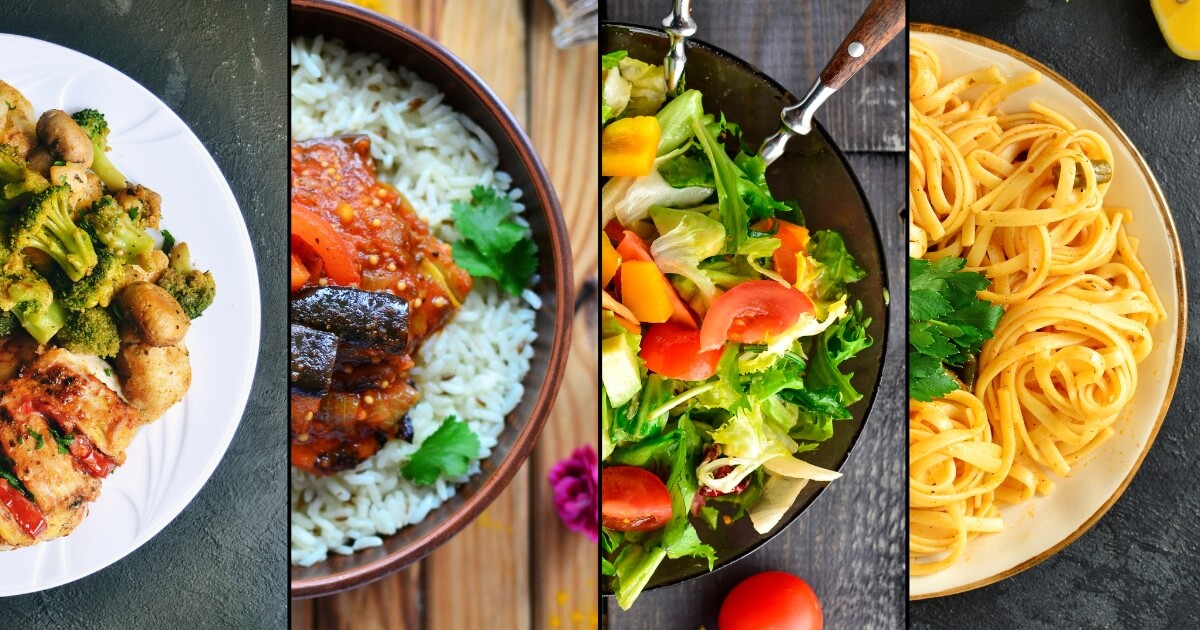These beginner cooking tips are like secret ingredients that make your kitchen less intimidating. They turn complex recipes and cooking techniques into simple steps that you can follow.
Remember that cooking is an adventure that extends beyond you alone when preparing a meal. It’s a shared experience where knowledge of cooks who’ve walked the path before can help guide you.
So, let’s step back into the kitchen with an open mind and a readiness to learn as I lay out essential cooking tips that every aspiring home chef should know for a stress-free cooking experience.
Getting Started In The Kitchen
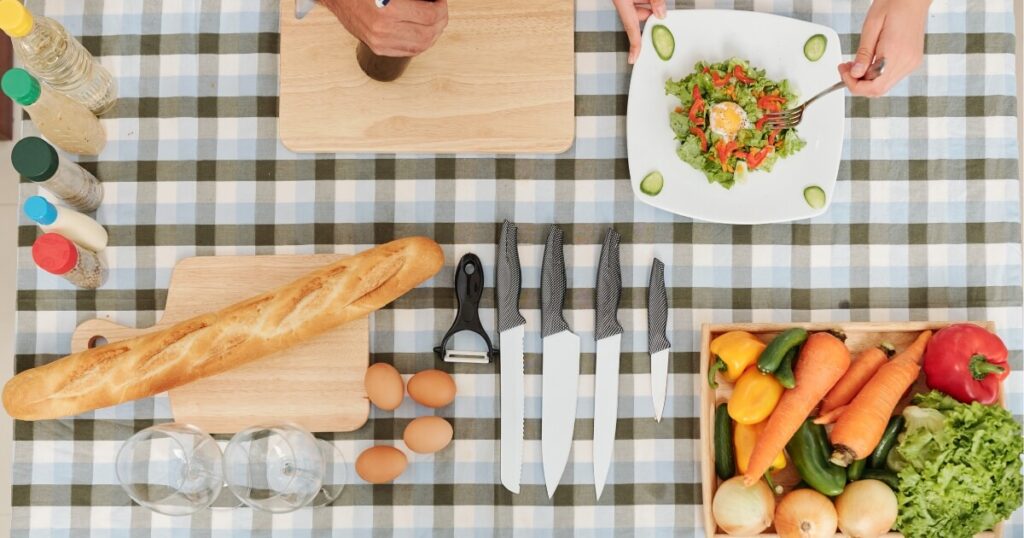
- Read Recipes Thoroughly: Before diving into cooking, take the time to fully read through the recipe. This step ensures you’re aware of all the necessary ingredients and steps, helping to avoid any mid-cooking surprises or hiccups.
- Ingredient Preparation: Before you turn on the stove, get all your ingredients prepped. This means washing, chopping, measuring, and arranging everything you need. This approach streamlines your cooking process and reduces stress, making the experience more enjoyable.
- Start with Simplicity: If you’re new to cooking, begin with straightforward recipes. These provide a solid foundation and help build your confidence in the kitchen. As you grow more comfortable, you can gradually tackle more complex dishes.
- The Power of a Timer: It’s easy to lose track of time while cooking. A kitchen timer is a simple yet essential tool to prevent overcooking. Whether it’s boiling pasta or baking a cake, timing can be the difference between a delicious dinner and the need to start over.
- Stocking Essentials: A well-stocked kitchen is the backbone of good cooking. Essentials like flour, sugar, olive oil, garlic, onions, and a variety of herbs are the building blocks for countless recipes. Having these on hand means you’re always ready to whip up a meal.
- A Well-Stocked Pantry: Beyond the basics, keeping your pantry filled with items like canned tomatoes, beans, and pasta ensures you have the ingredients for a quick, hearty meal anytime.
- Workspace Organization: A cluttered kitchen can make cooking chaotic. Organizing your workspace not only helps in smoothly following recipes but also keeps your mind clear. This organization extends from arranging ingredients to keeping tools within reach for a seamless cooking experience.
Knife Skills & Safety

- Sharp Knives are Safer: A sharp knife is a chef’s best friend. Keeping your knives sharp is crucial as they require less force to cut, reducing the risk of your knife slipping and causing an accidental injury. Regular honing and periodic sharpening can maintain the edge of your knives.
- Learn Knife Skills: Developing knife skills is a fundamental part of cooking safely and efficiently. Start with basic techniques like how to hold a knife properly and practice with simpler cuts. As you get comfortable, you can gradually increase your speed and try more advanced techniques.
- Clean as You Go: Maintaining a clean workspace is not just about tidiness; it’s a safety measure. Regularly wiping down cutting boards and counters and washing knives immediately after use helps prevent accidents and keeps your cooking space hygienic and organized.
Food Preservation & Storage
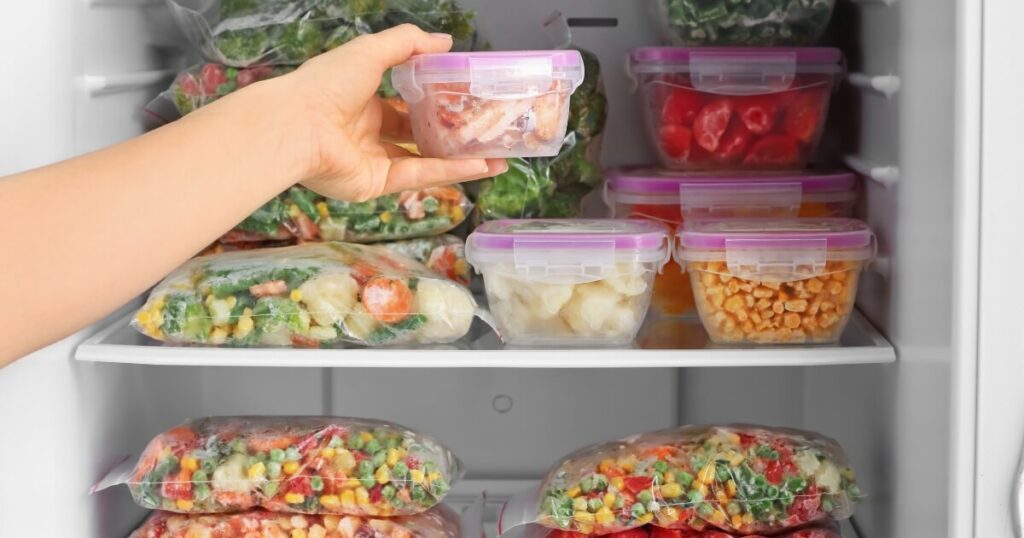
- Rest Meat After Cooking: Allowing cooked meat to rest before slicing is so important! This pause lets the juices redistribute throughout the meat so that each slice is moist and flavorful. The resting time varies depending on the size of the meat cut.
- Keep Herbs Fresh: Fresh herbs can uplift any dish but wilt quickly if not stored properly. Wrap them loosely in damp (not wet) paper towels and store them in the refrigerator. This method helps maintain their freshness and flavor for longer.
- Learn Food Safety: Understanding and practicing food safety is essential in the kitchen. This includes knowing how to avoid cross-contamination, properly storing different types of food, and keeping your cooking environment clean to prevent foodborne illnesses.
- Cook in Batches: Cooking in batches and freezing meals for later is a time-saving strategy. It ensures you always have homemade, healthy meals on hand. Remember to cool your food properly before freezing, and label your containers with dates for the best quality.
- Keep Your Fridge Organized: An organized fridge helps you track what you have and need, reducing food waste. It also ensures proper air circulation, which is crucial for maintaining the freshness of your stored food. Regularly check and organize your fridge to keep everything in check.
Flavor & Seasoning Mastery

- Layer Your Flavors: Build flavors by adding ingredients at different stages of cooking. For instance, add garlic early for a mellow taste and a bit more just before finishing for a sharper note.
- Toast Your Spices: Toasting spices in a dry pan can intensify their flavors. It’s a game-changer for dishes where spices are the star.
- Fresh vs. Dried Herbs: Understand when to use fresh herbs and when to opt for dried ones. Fresh herbs are great for finishing a dish or in light, fresh recipes, while dried herbs hold up well in longer cooking processes.
- Acidity is Key: A splash of vinegar or a squeeze of lemon can balance rich, heavy flavors and add a new dimension to your dish.
- Sweet and Sour: Balance sweet ingredients with something acidic. For instance, if your tomato sauce is too sweet, a bit of vinegar can balance it out.
- Bitter and Fat: Bitter flavors, like those in charred veggies or dark chocolate, pair well with fats like olive oil or cream to round out the taste.
- Spicy and Sweet: A classic combination in many cuisines, the heat from spices or chilies can be beautifully balanced with a touch of sweetness.
- Salt Wisely: Salt doesn’t just make food salty; it enhances other flavors. Use it to bring out the best in your ingredients, but always taste as you go when it’s safe to do so to avoid over-salting.
Cooking Techniques
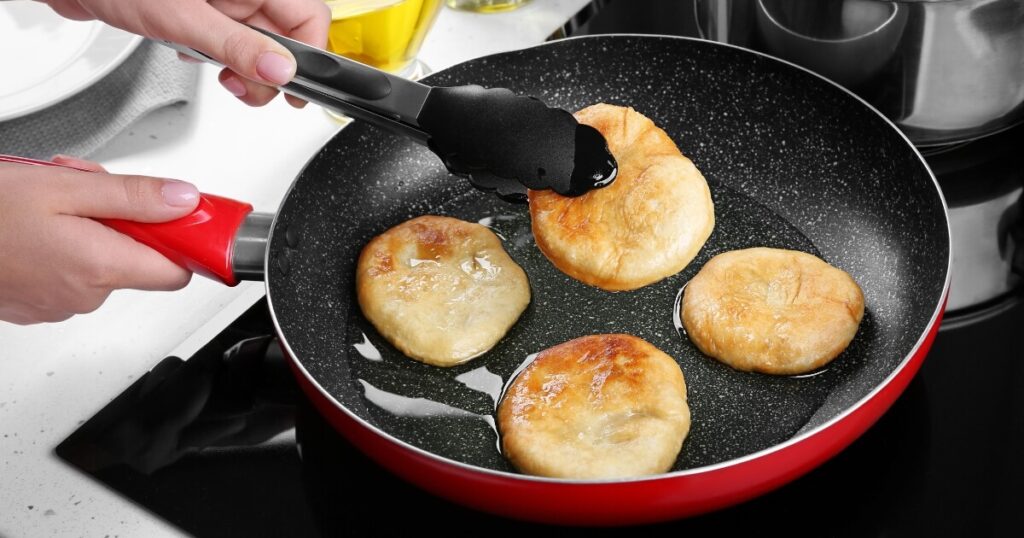
- Hot Pan, Cold Oil: This simple yet effective technique prevents food from sticking to the pan. Heat your pan first, and then add your favorite oil. This method creates a non-stick surface, ensuring a better sear on your food. It also helps prevent oil from turning bitter.
- Master the Heat: Understanding heat management is crucial in cooking. Not every dish requires a high flame. Delicate foods like eggs or fish often need a gentler, lower heat to avoid overcooking, while searing meat might require a higher temperature.
- Don’t Crowd the Pan: Giving your food enough space in the pan is key to cooking it evenly. Overcrowding can lead to steaming rather than searing, resulting in unevenly cooked and less flavorful dishes.
- Understand Doneness Tests: Knowing when your food is perfectly cooked is an art. Use a meat thermometer for meats to ensure the right internal temperature. Look for visual cues for vegetables and other items like color change or texture.
- Dry Foods Before Searing: To achieve a perfect sear with a crisp crust, ensure your food is dry before it hits the pan. Moisture on the surface creates steam, preventing browning and resulting in a less appealing texture.
- Learn to Butterfly Chicken: Butterflying, or spatchcocking, a chicken involves removing the backbone so the chicken can be flattened. This technique allows for quicker, more even cooking and is perfect for grilling or roasting.
- Learn to Blanch: Blanching involves briefly boiling vegetables and then plunging them into ice water. This technique preserves vegetables’ vibrant color and crisp texture, making them more appealing in taste and appearance.
Kitchen Tools & Organization

- Invest in a Few Good Tools: The right tools can transform your cooking experience. Investing in a high-quality chef’s knife, sturdy cutting board and reliable pans can significantly improve your cooking efficiency and enjoyment. These tools form the foundation of a well-equipped kitchen.
- Use the Right Pans: Different cooking tasks require different types of pans. For instance, stainless steel is great for acidic foods, non-stick is ideal for delicate foods like eggs, and cast iron is perfect for high-heat cooking, searing, and oven transfers. Understanding which material to use for each task can improve your cooking results.
- Get a Good Peeler: A sharp, comfortable peeler can significantly speed up your prep work. It’s not just about peeling vegetables. A good peeler can also create thin strips for salads, garnishes, and more, making it a versatile tool.
- Use Parchment Paper: Parchment paper is a baker’s best friend. It not only prevents sticking but also makes cleanup a breeze. It’s perfect for lining baking sheets and pans and can also create a non-stick surface for rolling out dough.
- Season Your Cookware: Properly seasoning your cookware, especially cast iron, is essential for maintaining a natural non-stick surface. Seasoning involves baking oil into the cast iron to create a smooth, non-stick layer, adding flavor to your food over time.
- Use the Right Fats: Different cooking fats have different smoke points and flavors, making some better suited for certain cooking methods than others. For example, olive oil is great for medium-heat cooking, while canola or vegetable oil can handle higher temperatures. Butter adds rich flavor but burns easily, so it’s often used for lower-heat dishes.
Advanced Prep & Cooking
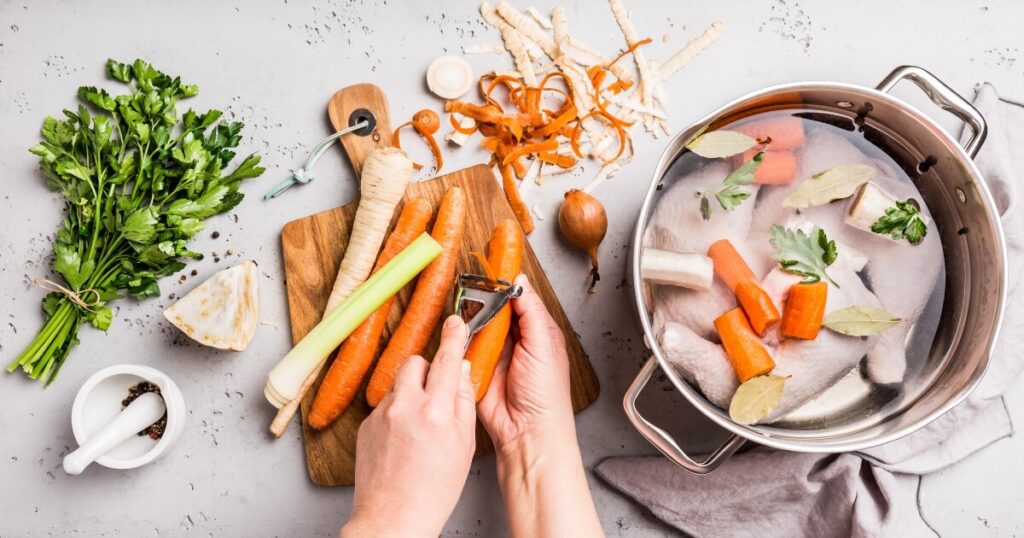
- Learn to Make Stocks: Homemade stocks are a game-changer in the kitchen. They form the base of countless soups, sauces, and stews, adding depth and richness that store-bought versions can’t match. Learning to make a basic chicken, beef, or vegetable stock will elevate your cooking.
- Make Your Own Dressings: Creating your own salad dressings allows for customization and freshness. Homemade dressings are free from preservatives and can be tailored to your taste preferences, making salads more exciting and flavorful.
- Cook pasta Properly: Cooking pasta seems simple, but doing it correctly makes a big difference. Use a large pot with plenty of boiling, salted water seasons it from the inside out to help give you perfectly cooked pasta every time.
- Refresh Your Greens: Reviving wilted greens in ice water quickly brings them back to life. The cold water crisps up the leaves, making them salad-ready again. This trick is especially handy for leafy greens like lettuce, spinach, green onions, and herbs.
- Grate Your Own Cheese: Freshly grated cheese is superior in both flavor and texture to pre-grated varieties. It melts more smoothly and lacks the anti-caking agents found in bagged cheese, making it ideal for cooking and garnishing.
Baking Basics
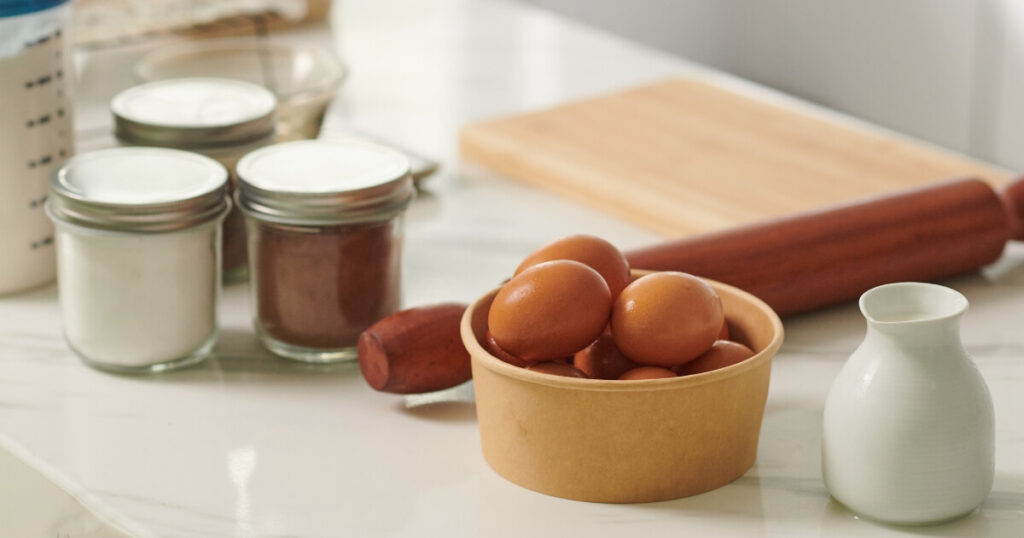
- Let Baked Goods Cool: Many baked goods still cook slightly or set up as they cool, affecting texture and flavor. Cooling your creations on a wire rack allows air to circulate, preventing sogginess.
- Bake with Precision: Baking is a science that requires accuracy. Carefully measuring ingredients ensures consistency and success in your baking endeavors. This is particularly true for ingredients like flour, sugar, and leavening agents.
- Rest Dough: Resting dough is an important step in many baking recipes. It allows the gluten to relax, making the dough easier to work with and enhancing flavor development, particularly in bread and pastry doughs.
- Yikes, Don’t Overmix: Overmixing batter and dough can lead to tough, dense baked goods. Mix just until the ingredients are combined. This is especially important for muffins, cakes, and quick breads, where a light, tender texture is desired.
Creative Cooking
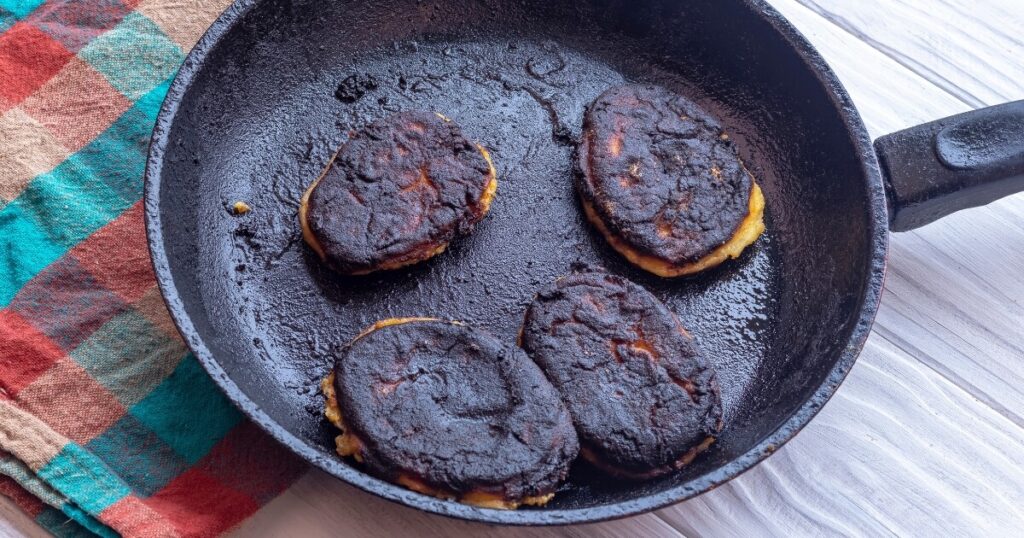
- Learn to Embrace Mistakes: Mistakes in the kitchen can be unexpected opportunities for creativity. A burnt crust might lead to discovering a delicious filling for a new dish, or overcooked vegetables could inspire a savory soup. Embrace these moments as part of the learning process.
- Sharpen Your Senses: Developing your sensory perception is key in cooking. The aroma of baked bread, the sizzle of steak, and the feel of pasta to check if it’s al dente are cues that can guide you more effectively than any recipe and often more accurate than a timer.
- Experiment with Flavors: Don’t be afraid to step out of your comfort zone with flavor combinations. Mixing sweet, sour, salty, and umami can lead to exciting new tastes. Try adding fruit to savory dishes or herbs in desserts.
- Master the Omelet: Perfecting an omelet is a lesson in heat control and timing. It teaches you to recognize when the eggs are just set, how to gently fold and roll, and the importance of not overcooking. This skill is transferable to many other delicate dishes.
- Cooking with Leftovers: Challenge yourself to create new dishes from leftovers. This not only reduces waste but also sparks creativity in the kitchen. Leftover vegetables can become a stir-fry, and yesterday’s roast can become a hearty sandwich or salad.

